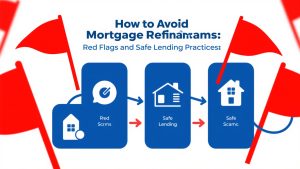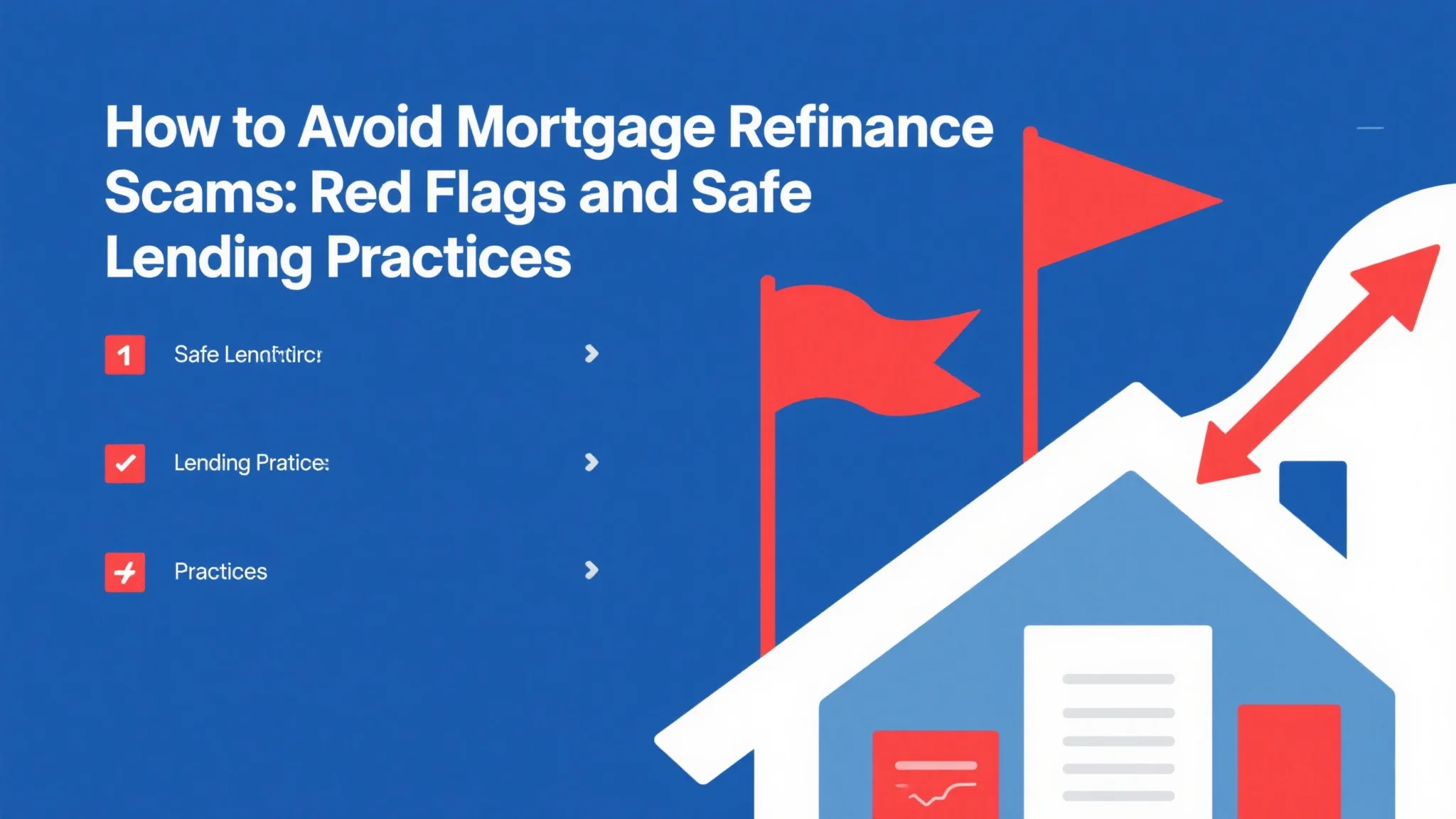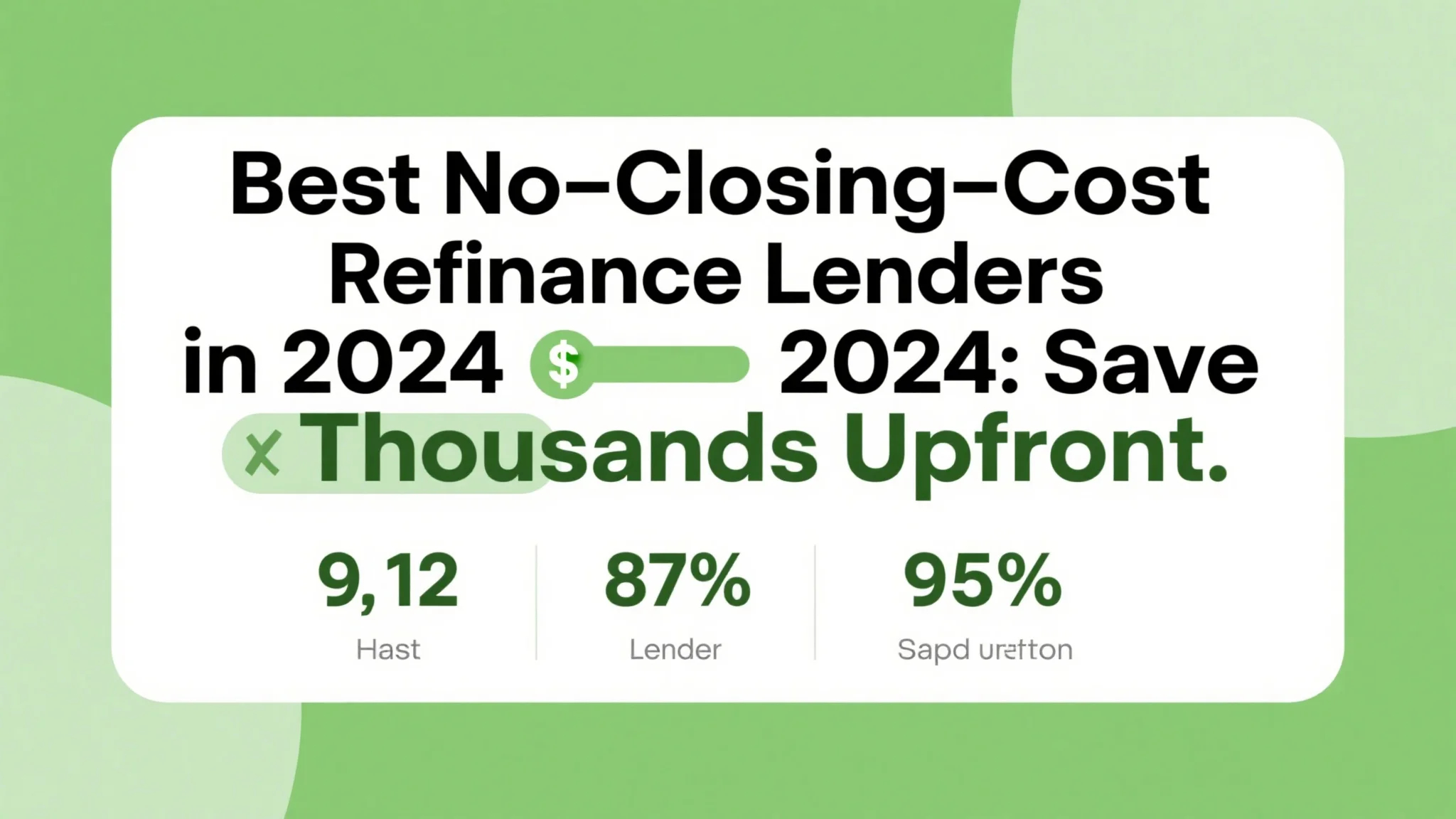How to Avoid Mortgage Refinance Scams: Red Flags and Safe Lending Practices
In today’s complex financial landscape, homeowners must remain vigilant against refinance fraud warning signs while seeking better loan terms. This comprehensive guide examines the most common predatory lending prevention strategies and outlines proven methods for ensuring a safe mortgage refinance experience. By understanding both the overt and subtle danger signals, borrowers can protect their most valuable asset while still taking advantage of legitimate money-saving opportunities.
Recognizing the Most Common Refinance Scams
The first line of defense against mortgage fraud involves learning to identify refinance fraud warning signs before they escalate into financial disasters. Many scams begin with unsolicited offers promising unrealistically low rates or guaranteed approvals regardless of credit history. Effective predatory lending prevention starts with skepticism toward any lender who contacts you first or pressures for immediate decisions. A truly safe mortgage refinance process allows time for consideration, comparison shopping, and thorough review of all documents.
Sophisticated scammers often mimic legitimate lenders, making some refinance fraud warning signs difficult to spot without careful scrutiny. Watch for subtle red flags like requests for upfront fees before providing loan estimates, inconsistencies in company information, or reluctance to provide licensing details. Proper predatory lending prevention requires verifying a lender’s credentials through state regulatory agencies before proceeding. Remember that a safe mortgage refinance transaction will always involve complete transparency about costs, terms, and the lender’s identity.
Protecting Yourself from Predatory Lending Tactics
Beyond outright scams, homeowners should understand the more nuanced refinance fraud warning signs associated with predatory lending practices. These include loan flipping (frequent unnecessary refinancing), equity stripping (excessive fees that reduce home equity), and bait-and-switch rate adjustments. Comprehensive predatory lending prevention involves learning to recognize when loan terms don’t align with your initial discussions or when closing costs seem inexplicably high. A safe mortgage refinance should always leave you in a better financial position, not trapped in a cycle of debt.
Certain populations face higher risks and should pay particular attention to refinance fraud warning signs. Seniors, non-native English speakers, and those with credit challenges often become targets for predatory schemes. Effective predatory lending prevention for these groups might involve bringing a trusted advisor to meetings or insisting on translated documents when needed. The foundation of any safe mortgage refinance is clear communication and full understanding of all terms before signing binding agreements.

Verifying Lender Credentials and Legitimacy
One of the most critical refinance fraud warning signs involves a lender’s inability or unwillingness to provide proper licensing information. Every state maintains databases where consumers can verify mortgage lender licenses as part of standard predatory lending prevention practices. Before committing to any safe mortgage refinance, confirm that the company and individual loan officer hold current licenses in your state and check for any disciplinary history through the Nationwide Multistate Licensing System (NMLS).
Additional refinance fraud warning signs include lenders who operate solely online with no physical address or who use suspicious email domains. As part of comprehensive predatory lending prevention, research the company’s history, read independent reviews, and confirm their standing with the Better Business Bureau. A truly safe mortgage refinance provider will have an established track record and multiple verifiable contact methods beyond just a website form.
Understanding Proper Refinance Documentation
Knowledge of proper loan documents serves as powerful protection against refinance fraud warning signs. Federal law requires lenders to provide a Loan Estimate within three business days of application and a Closing Disclosure at least three days before signing – key components of predatory lending prevention. Be wary of any lender who skips these steps or pressures you to sign incomplete forms. A safe mortgage refinance process ensures you receive and understand all paperwork well before commitment.
Other documentation-related refinance fraud warning signs include requests to sign blank pages, unexplained last-minute changes to loan terms, or pressure to backdate documents. Strong predatory lending prevention involves carefully reading every page and questioning any discrepancies. Remember that in a safe mortgage refinance, you have the absolute right to understand and agree to every term before proceeding to closing.
Safe Practices for the Digital Refinance Era
Modern refinance fraud warning signs increasingly involve digital security concerns, as more transactions move online. Effective predatory lending prevention now requires vigilance about email phishing attempts, fraudulent websites mimicking legitimate lenders, and insecure document sharing methods. Ensure any safe mortgage refinance process uses encrypted portals for sensitive information and verifies identity through multiple authentication factors.
Additional digital-era refinance fraud warning signs include lenders who insist on payment via unconventional methods like gift cards or cryptocurrency. Standard predatory lending prevention dictates that all transactions should occur through traceable, conventional banking channels. A safe mortgage refinance will never involve pressure to use payment methods designed to avoid paper trails or make funds difficult to recover.
Recourse and Reporting Suspected Fraud
Even with careful attention to refinance fraud warning signs, some homeowners may still encounter suspicious activity. Understanding proper predatory lending prevention includes knowing how to report concerns to authorities like the Consumer Financial Protection Bureau (CFPB), state banking regulators, and the Federal Trade Commission. Documenting all communications creates essential evidence if you need to challenge a potentially unsafe mortgage refinance.
If you’ve already fallen victim despite spotting refinance fraud warning signs, immediate action can sometimes mitigate damage. Contact a HUD-approved housing counselor for predatory lending prevention advice specific to your situation. In cases of outright fraud, legal assistance may help unwind a dangerous loan and restore your path to a truly safe mortgage refinance with reputable lenders.
Building Long-Term Financial Protection
Developing ongoing awareness of refinance fraud warning signs creates lasting financial security beyond any single transaction. Make predatory lending prevention part of your regular financial education by staying informed about evolving scam tactics and regulatory changes. This proactive approach ensures every future safe mortgage refinance decision benefits from accumulated knowledge and sharpened instincts.
Remember that the most effective defense against refinance fraud warning signs combines healthy skepticism with informed confidence. By mastering predatory lending prevention fundamentals and surrounding yourself with trusted advisors, you can navigate the refinance market safely. A truly safe mortgage refinance leaves you financially stronger, with clear understanding of your obligations and rights as a borrower.






